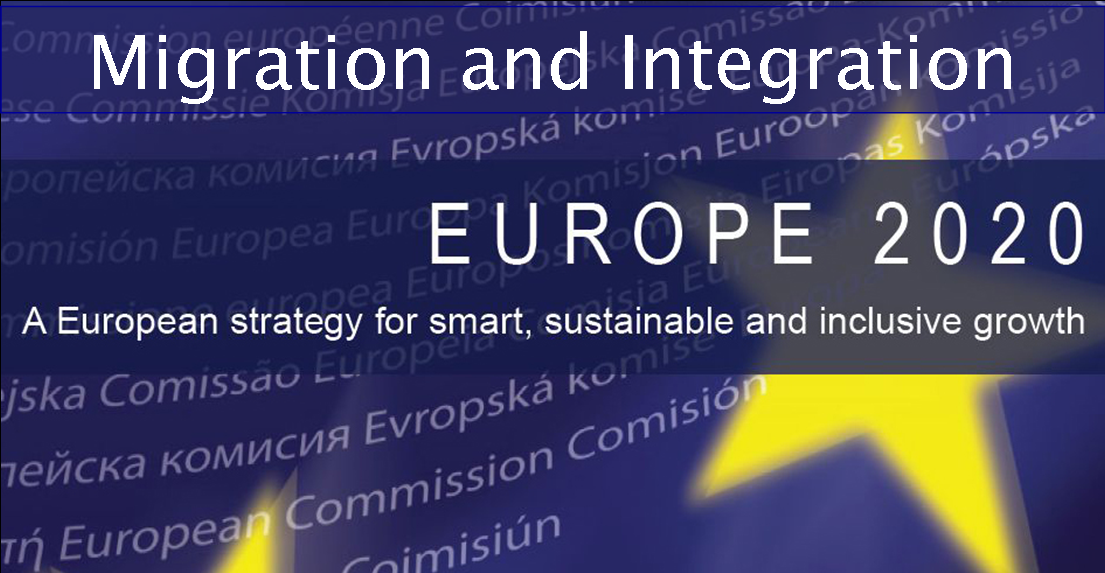
Citizens of EU Member States have freedom to travel and freedom of movement within the EU’s internal borders. Migration policies within the EU in relation to citizens of non-member countries are increasingly concerned with attracting a particular migrant profile, often in an attempt to alleviate specific skills shortages. Selection can be carried out on the basis of language proficiency, work experience, education and age. Alternatively, employers can make the selection so that migrants already have a job upon their arrival.
Besides policies to encourage labour recruitment, immigration policy is often focused on two areas: preventing unauthorised migration and the illegal employment of migrants who are not permitted to work, and promoting the integration of immigrants into society.
GLOSSARY:
- Migration refers to the number of migrants, people changing their residence to or from a given area (usually a country) during a given time period (usually one year).
- Immigrants are people arriving or returning from abroad to take up residence in a country for a certain period, having previously been resident elsewhere. According to the 1998 United Nations recommendations on the statistics of international migration (Revision 1), an individual is a long-term immigrant if he/she stays in his/her country of destination for a period of 12 months or more, having previously been resident elsewhere for 12 months or more.
- Immigration is the number of immigrants for a given area during the year.
- Emigrants are people leaving the country where they usually reside and effectively taking up residence in another country. According to the 1998 UN recommendations on the statistics of international migration (Revision 1), an individual is a long-term emigrant if he/she leaves his/her country of previous usual residence for a period of 12 months or more.
- Emigration is the number of emigrants for a given area during the year.
- Net migration is the difference between immigration to and emigration from a given area during the year (net migration is positive when there are more immigrants than emigrants and negative when there are more emigrants than immigrants). Since many countries either do not have accurate figures on immigration and emigration, or have no figures at all, net migration has to be estimated. It is usually estimated as the difference between the total population change and the natural increase during the year. Net migration gives no indication of the relative scale of the separate immigration and emigration flows to and from a country; a country may report low net migration but experience high immigration and emigration flows.
- Crude rate of net migration is the ratio of net migration during the year to the average population in that year. The value is expressed per 1 000 inhabitants.
- Asylum is a form of protection given by a state on its territory based on the principle of non-refoulement (no repulsing/sending back) and internationally or nationally recognised refugee rights. It is granted to a person who is unable to seek protection in his/her country of citizenship and/or residence, in particular for fear of being persecuted for reasons of race, religion, nationality, membership of a particular social group or political opinion.
- A refugee means a third-country national who, owing to a well-founded fear of being persecuted for reasons of race, religion, nationality, political opinion or membership of a particular social group is outside the country of nationality and is unable or, owing to such fear, is unwilling to avail himself or herself of the protection of that country, or a stateless person, who, being outside of the country of former habitual residence for the same reasons as mentioned above, is unable or, owing to such fear, unwilling to return to it.
In 2015, there were an estimated 2.7 million immigrants to the EU-28 from non-member countries. In addition, 1.9 million people previously residing in one EU Member State migrated to another Member State.
Regarding the gender distribution of immigrants to the EU Member States in 2015, there were slightly more men than women (56 % compared with 44 %). The Member State reporting the highest share of male immigrants was Germany (63 %); by contrast, the highest share of female immigrants was reported in Cyprus (57 %).
Immigrants into EU Member States in 2015 were, on average, much younger than the total population already resident in their country of destination. On 1 January 2016, the median age of the total population of the EU-28 was 42.6 years. By contrast, the median age of immigrants to EU-28 in 2015 was 27.5 years.
The following files can be used by students in order to prepare the report for the European Active Citizenhip Memorandum. It´s a compilation of statistics collected from Eurostat.
|
IMIGRATION TIME SERIES
|
INMIGRATION BY AGE GROUP |
INMIGRATION BY SEX
|
|
|
|
|
|
IMIGRATION BY CITIZENSHIP
|
|
Spain
|
Croatia
|
Italy
|
Latvia
|
Finland
|
|

|

|

|

|

|
More info: